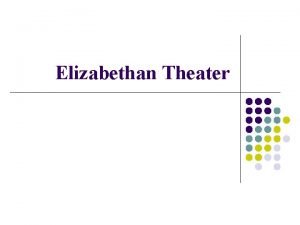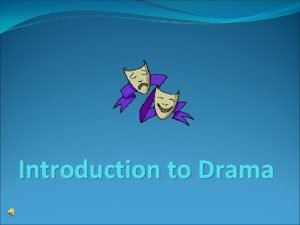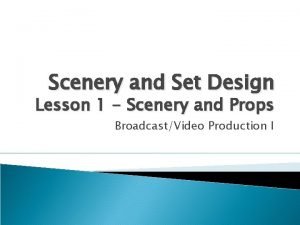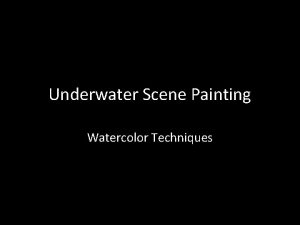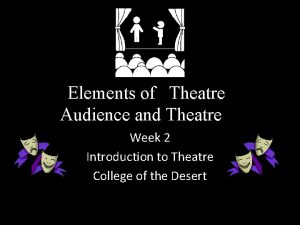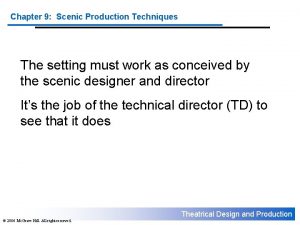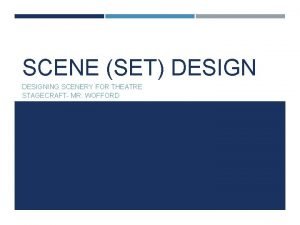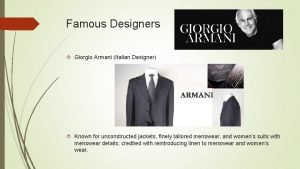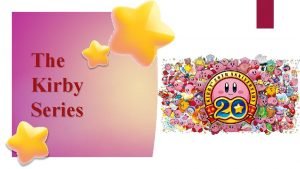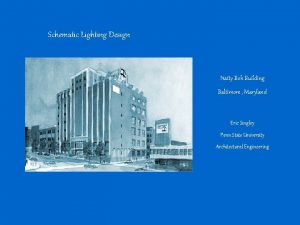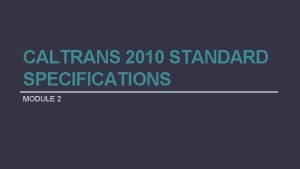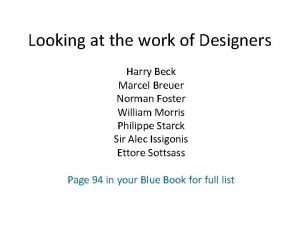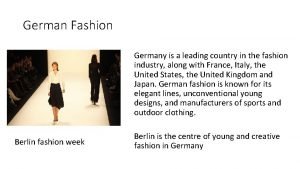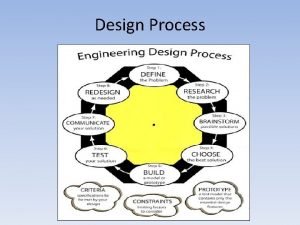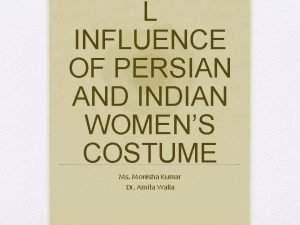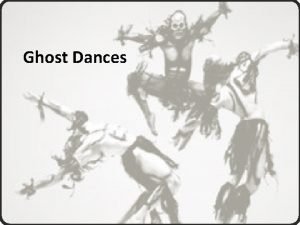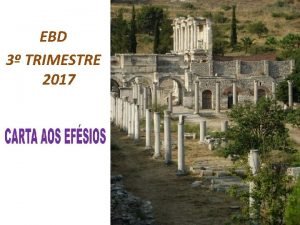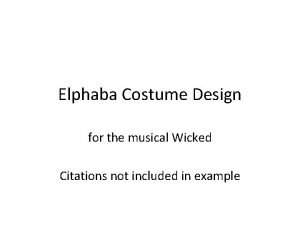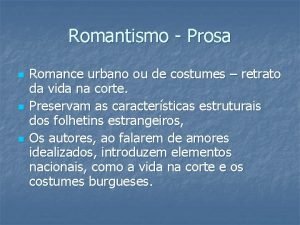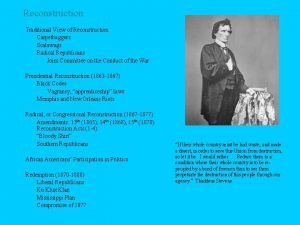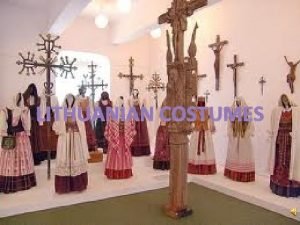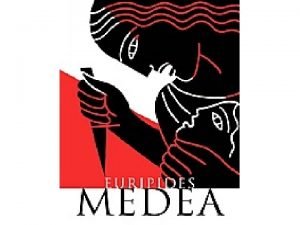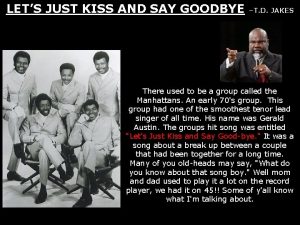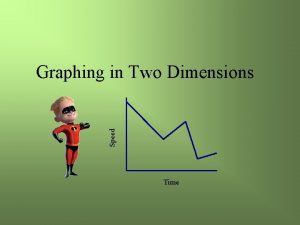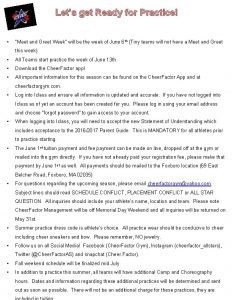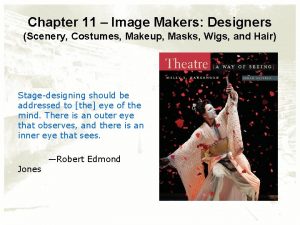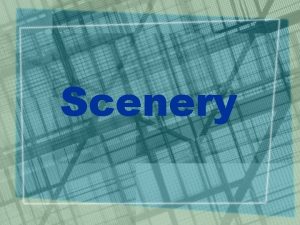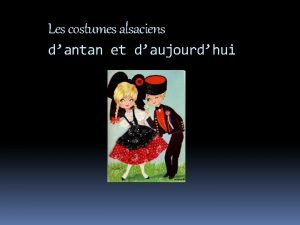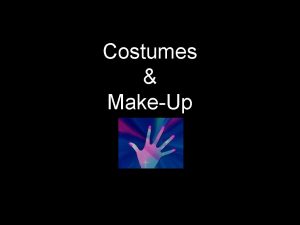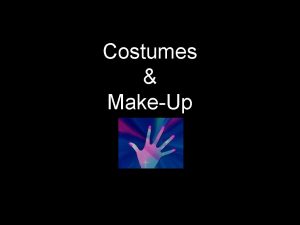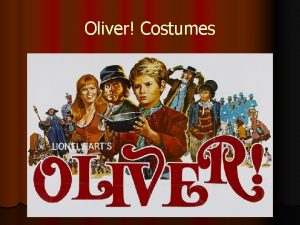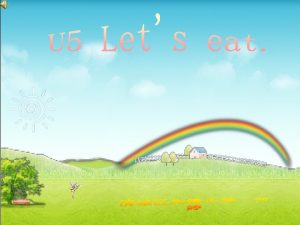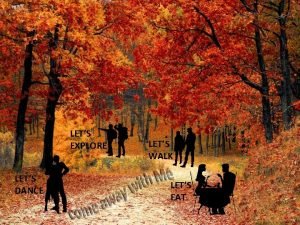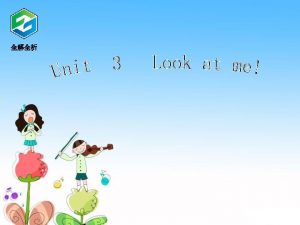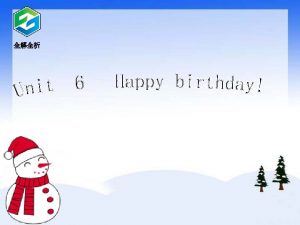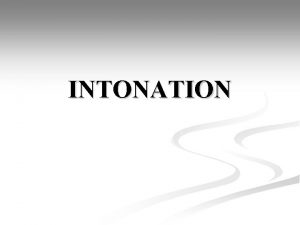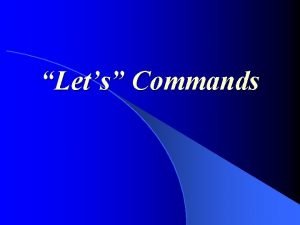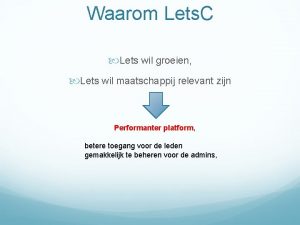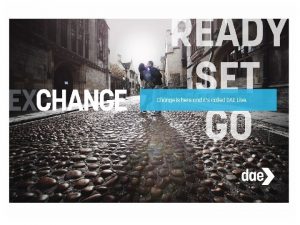The Designers Scenery and Costumes First lets consider





















































- Slides: 53

The Designers: Scenery and Costumes

First, let’s consider the basic elements of design. Some 1. 2. 3. 4. 5. elements of design: Line Mass Texture Color Composition Unity, contrast, balance, emphasis 2

Line Our eyes respond to line…we follow lines up and down and across Line can help create verticality or horizontality Line in nature: 3

Line 4

Mass refers to how heavy or light something seems to be. 5

Mass Compare the weightiness of these two historic men’s fashions. 6

Texture How things feel (or how we think they might feel)… this is a visual response to our memory of how things feel to the touch. 7

Think of how you respond to the textures of these fabrics 8

Color This can be a highly emotional area of design. It is amazing how many associations we have with color. Some of these are culturally specific. 9

Color How much does color influence our recognition of these figures? 10

Color How much does color influence our recognition of these figures? 11

Color How much does color influence our recognition of these figures? This is the Russian Santa…in BLUE!! 12

Composition This is the deliberate way all of these elements come together… remember, an artist makes decisions about how to put it all together. 13

Do you recognize this play? Have you seen Hairspray? 14

Can you identify the time period for the next drawings? The women’s outfits on the left and right represent two different decades. 15


1870 s 1880 s

g

g 1930 s 1920 s


1940 s

Costume Design Related elements of costume design Makeup 22

Costume Design Related elements of costume design, continued Hairstyles and wigs 23

24

© 2010 The Mc. Graw-Hill Companies, all rights reserved. 25

© 2010 The Mc. Graw-Hill Companies, all rights reserved. 26

© 2010 The Mc. Graw-Hill Companies, all rights reserved. 27

Scene Design The scenery provides: 1. Mood and spirit of the play 2. Locale, time of year, and historical period 3. Design Concept 4. Central image or metaphor 5. Socio-economic status 28

Scene Design Establishing locale and period A stage set should tell the audience where and when the play takes place A stage set can tell us what kinds of characters a play is about 29

Look at the set designs in the following pictures… what do they tell you about the characters who will inhabit these settings, about the time period, and about the socioeconomic status? © 2010 The Mc. Graw-Hill Companies, all rights reserved. 30

Scene Design 31

Scene Design 32

Scene Design 33

Scene Design 34

Scene Design 35

Scene Design 36

Scene Design Developing a design concept Design concept: a unifying idea carried out visually Should compliment the directorial concept © 2010 The Mc. Graw-Hill Companies, all rights reserved. 37

Scene Design © 2010 The Mc. Graw-Hill Companies, all rights reserved. 38

Mini Design Project For This Unit- Examples 39

© 2010 The Mc. Graw-Hill Companies, all rights reserved. 40

© 2010 The Mc. Graw-Hill Companies, all rights reserved. 41

© 2010 The Mc. Graw-Hill Companies, all rights reserved. 42

43

Chapter 10 The Designers: Lighting and Sound

Stage Lighting in theatre history- First 2, 000 years of theatre history, it took place mostly outdoors during the day Playwrights used the imagination to suggest nighttime, or shifts of lighting Playwrights also used language in place of lighting Around 1600, theatre began to move indoors ▪ Candles and oil lamps were used for illumination 1803, theatre in London installed gaslights 1879, Thomas Edison invented the light bulb 45

Stage Lighting Objectives of lighting design 1. Provide visibility 2. Help establish time and place 3. Help create mood 4. Reinforce the style of the production 5. Provide focus onstage and create visual compositions 6. Establish rhythm of visual movement 46

Stage Lighting Elements of stage lighting Intensity Color Direction Form Movement 47

Stage Lighting controls Lighting changes, or cues, are arranged ahead of time ▪ Black-out: all the lights are shut off at once ▪ Fade: lights dim slowly ▪ Cross-fade: one set of lights come down while another comes up ▪ Split cross-fade: lights that are coming up are on a different fade count from the lights coming down 48

Stage Lighting The lighting designer’s collaborators Assistant designers and others who help create the light plot A master electrician Moving light programmer Lead spot operator 49

Sound in the Theatre Sound reproduction: advantages and disadvantages Amplification ▪ Should it be used for singing? ▪ How loud should it be? ▪ Should speech be amplified? Sound effects 50

Sound in the Theatre The sound designer Responsible for arranging and orchestrating all the aural aspects of a production Consults with director to determine sound requirements, including sound effects and amplification 51

Sound in the Theatre Understanding sound reproduction and sound reinforcement Sound reproduction: use of motivated or environmental sounds ▪ Motivated sounds: a sequence that announces the arrival of a character ▪ Noise of a car crunching on gravel ▪ A car motor turning off ▪ Environmental sounds: noises of everyday life that help create verisimilitude in a production ▪ Street traffic in a city ▪ Crickets in the country 52

Sound in the Theatre Understanding sound reproduction and sound reinforcement, continued Reinforcement: amplification of sounds produced by a performer or a musical instrument 53
 Elizabethan scenery and costumes were elaborate
Elizabethan scenery and costumes were elaborate Where does the word drama come from
Where does the word drama come from The scenery backdrops and furniture that create the setting
The scenery backdrops and furniture that create the setting Which of the following is an advantage of hardwall scenery?
Which of the following is an advantage of hardwall scenery? Underwater painting techniques
Underwater painting techniques Importance of audience in theatre
Importance of audience in theatre Battened butt joint
Battened butt joint Scenery
Scenery Coffee is countable or uncountable
Coffee is countable or uncountable Genesee scenery
Genesee scenery Myweb hokkaido
Myweb hokkaido Logical view database
Logical view database Famous italian designer
Famous italian designer Inutamago
Inutamago Lighting designers baltimore
Lighting designers baltimore Thief series designers
Thief series designers Saints row designers
Saints row designers Caltrans standard specifications 2006
Caltrans standard specifications 2006 Temporal key integrity protocol designers
Temporal key integrity protocol designers Memphis design movement designers
Memphis design movement designers Klopp german national team
Klopp german national team A systematic creative process for designers
A systematic creative process for designers How would you describe the costumes and props they used
How would you describe the costumes and props they used Props and costumes used in moro-moro
Props and costumes used in moro-moro Scuttle and slack
Scuttle and slack Gupta period costumes
Gupta period costumes Renaissance clothing italy
Renaissance clothing italy Ghost dances christopher bruce
Ghost dances christopher bruce Elizabethan theatre costume
Elizabethan theatre costume A santidade cristã é oposta aos costumes dos gentios
A santidade cristã é oposta aos costumes dos gentios Roman theatre costumes
Roman theatre costumes Perintah untuk membuat 2 buah sprite yang sama adalah
Perintah untuk membuat 2 buah sprite yang sama adalah Fungsi looks
Fungsi looks Hungarian costumes
Hungarian costumes Traditional slovenian clothing
Traditional slovenian clothing Elizabethan theatre presentation
Elizabethan theatre presentation Elphaba costume
Elphaba costume Turkey dance traditional
Turkey dance traditional Bean costume
Bean costume Oedipus family tree
Oedipus family tree Oedipus episode 2 summary
Oedipus episode 2 summary Ukraine costumes
Ukraine costumes Romantismo regionalista
Romantismo regionalista Scalawags costumes
Scalawags costumes Traditional lithuanian outfit
Traditional lithuanian outfit Prosterneda
Prosterneda Let's just kiss and say goodbye
Let's just kiss and say goodbye A train pulls into a station and lets off its passengers
A train pulls into a station and lets off its passengers Identifying qualitative graphs
Identifying qualitative graphs Lets meet and greet
Lets meet and greet Hình ảnh bộ gõ cơ thể búng tay
Hình ảnh bộ gõ cơ thể búng tay Slidetodoc
Slidetodoc Bổ thể
Bổ thể Tỉ lệ cơ thể trẻ em
Tỉ lệ cơ thể trẻ em
